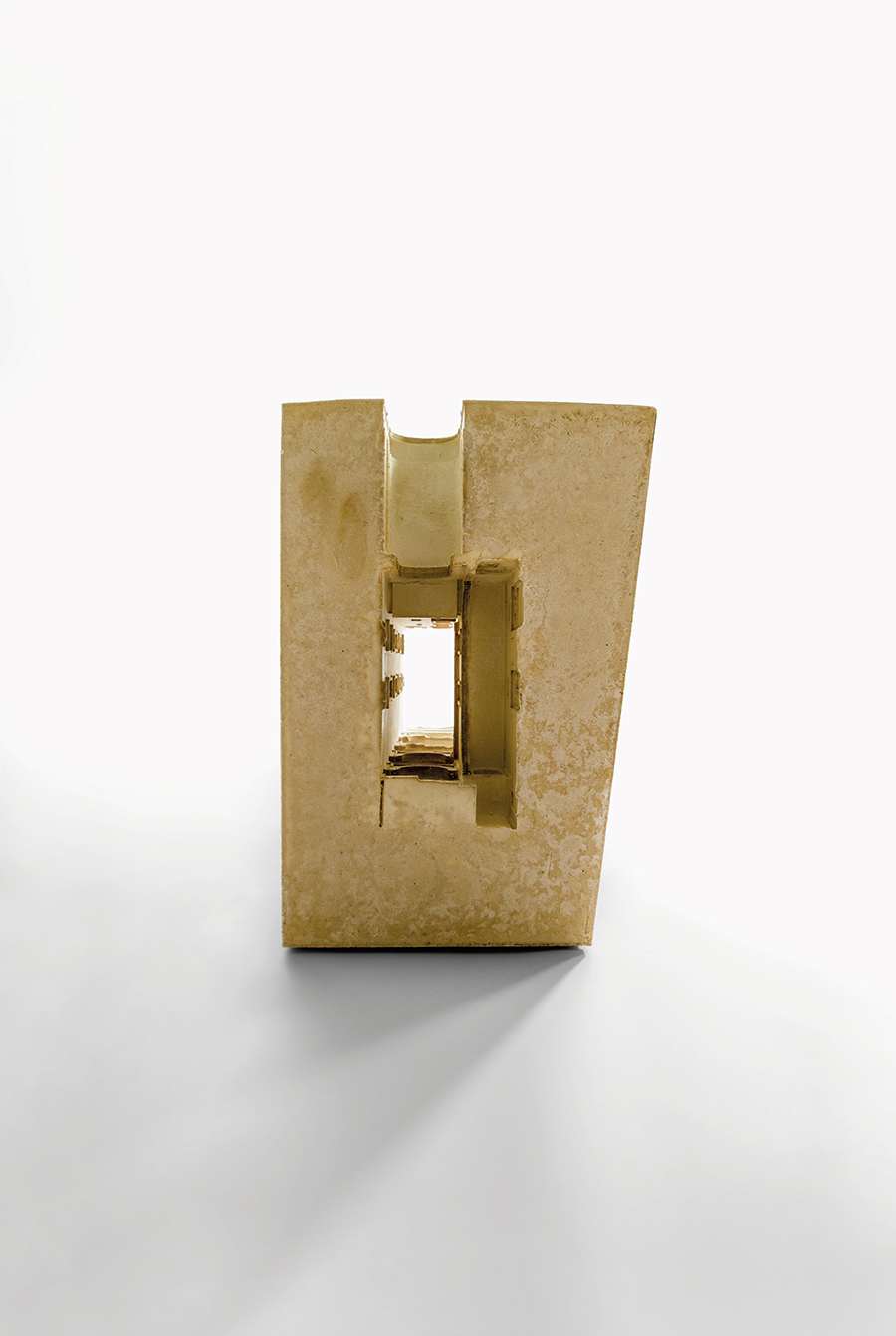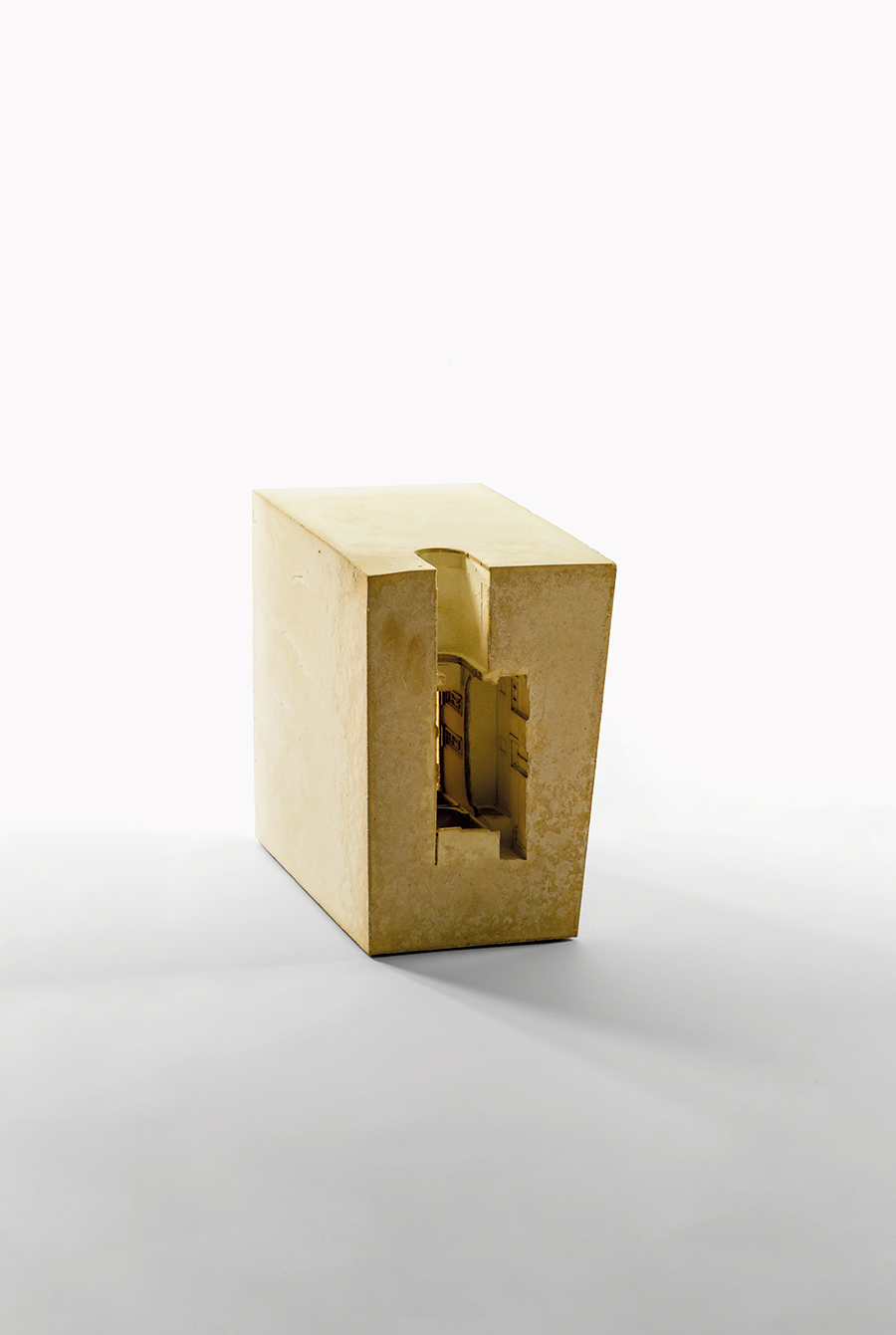

Probably the most awe-inspiring example that combines the ‘open’ double staircase typology with single revolution stairs can be found at the so-called Palazzo Persico, in via Pietro Trichera 5.¹ Built as a restructuring of older constructions, by an unknown architect for an unknown client, the staircase connects four floors and has an exceptional plan: an in depth squeezed hexagonal open well, set within a similarly compressed decagon that occupies the whole width of the courtyard, but is shortened along its longitudinal axis. The deployment of its five flights per floor is imaginative, with only two landings opposite each other, offering access to apartments at staggered levels. All elements collaborate towards an amazing spatial impact on the courtyard. It achieves this by doing more than fusing the two earlier mentioned typologies: it also leaves out all columns, and exposes the central open well, normally relegated to an enclosed environment, as in Palazzo Palmarice, directly to the courtyard. The effect, today unfortunately mitigated by the insertion of an elevator, is overwhelming: seen from the courtyard, and even from the street, the visitor can perceive the complete unfolding of the stairs. From this inclined angle, the hexagonal open central well seems much larger than suggested in plan and, glowing with natural light, is no less than breath-taking. The absence of matter, in its core and in the openness to the courtyard, is close to vertiginous. The distinctive design of the landings, sober in their detailing but voluptuously undulating and protruding into the space of the cortile, adds to the power and the unexpected dynamism of the overall, unadorned composition. All elements seem to be there to assume the hand of Sanfelice—to the extent that this staircase may well stand as a pars pro toto for the qualities of his whole staircase oeuvre. If not, one must presuppose another, hitherto unknown, virtuoso who helped transform the Neapolitan staircase typology into what Christof Thoenes once called “the star of the palace composition in Naples”²—a century before the invention of the mechanical lift would divert architectural explorations away from these enchanting structures.
1. Cf. Italo Ferraro, Napoli. Atlante della Città Storica: Centro Antico. Napoli, Edizioni Clean, 2002; pp. 272-273, 283-84; and Pezone 2015: 141-143.
2. Christof Thoenes, Ein spezifisches Treppenbewußtsein. Neapler Treppenhäuser des 18. Jahrhunderts, in ‘Daidalos’, (Berlin) 1983, 9; pp. 77-85.